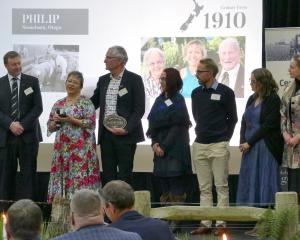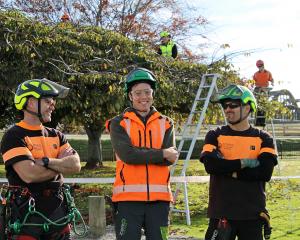
The Pomahaka Water Care group (PWC) and Otago Regional Council (ORC) study near Tapanui on Wednesday, April 30, caught, tagged and released scores of tiny native galaxids.
"People associate ‘galaxid’ with whitebait, but these galaxids are non-migratory adult fish, endemic to the Pomahaka catchment," group co-ordinator Craig Simpson said.
"They live their whole lives including their spawning cycles from late winter to early spring in these few streams. This is the only place you’ll find them."
The previous afternoon, Mr Simpson had set 12 traps along 150m of Peterson Creek in preparation for ORC scientists to tag the tiny catch.
"The fish normally move around from dusk to dawn, so the traps were set overnight and caught a range from older fish to young ones probably hatched in spring last year.
"The count was 114 caught, 47mm to 110mm, with the largest 61 tagged because we don’t want to interfere too much with the growing juveniles.
"There’s a low growth area near the tail where the little tags are inserted and sit underneath its skin. They stay there to identify them for years, so if we tag one that was 60mm today, what does that look like in a year’s time and has it moved to a different area of the stream?"

"The creek’s full of aquatic plants and there is a bit of sediment on the bottom clogging up the spaces between the rocks where the invertebrates that are the major food source for these fish live.
"We’re creating a sanctuary to protect the biodiversity and the tagging is to learn more about the galaxid life cycle, because we don’t really know."
He said the fish study was also important to monitor the health of the stream itself, and felt PWC’s environmental effort was an example of how farming practice was improving overall.
Livestock are kept away from the stream, a riparian planting day with Tapanui Primary School is scheduled for May 29, and future tagging is planned help show the effects of the area’s habitat restoration.











